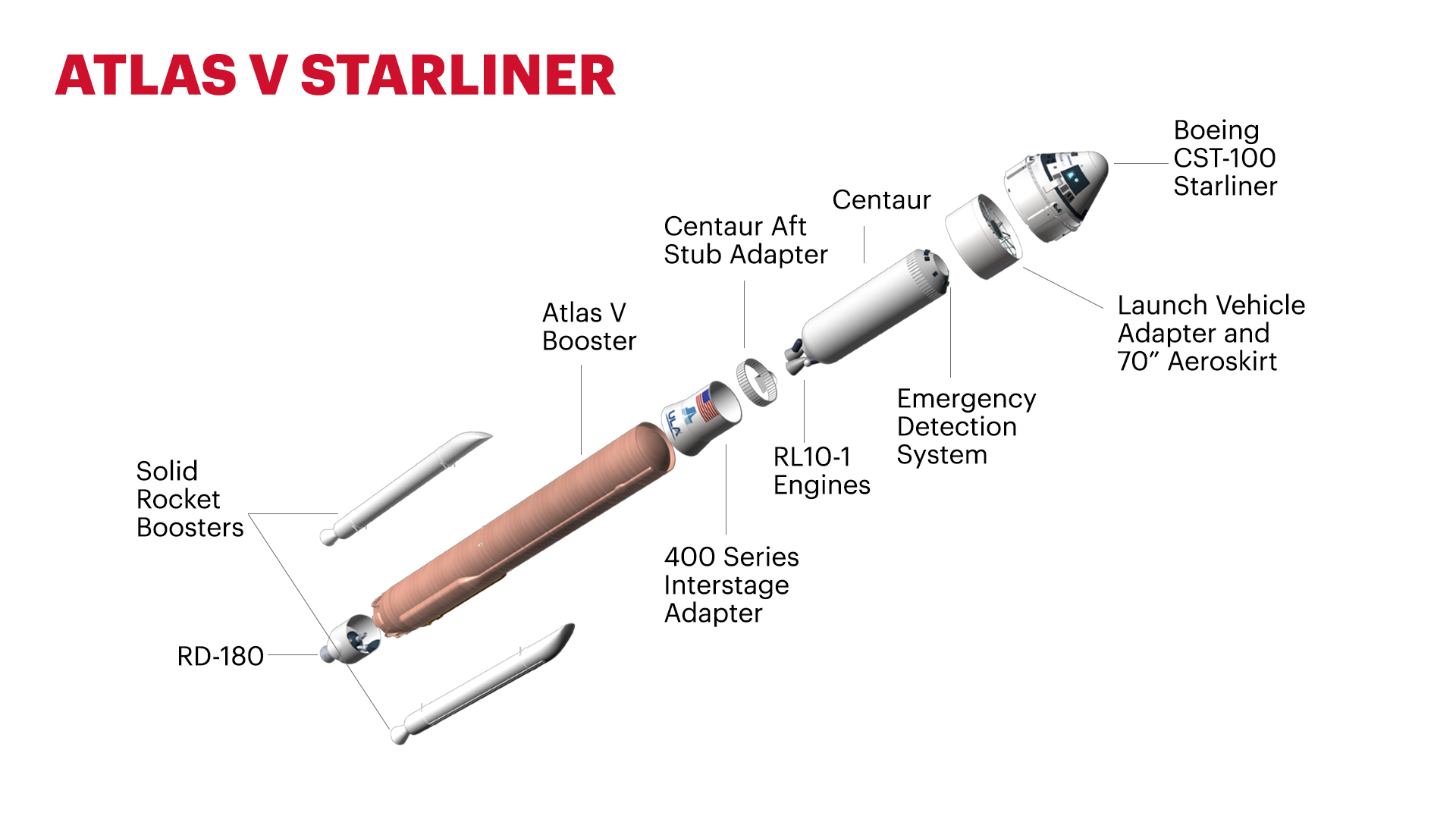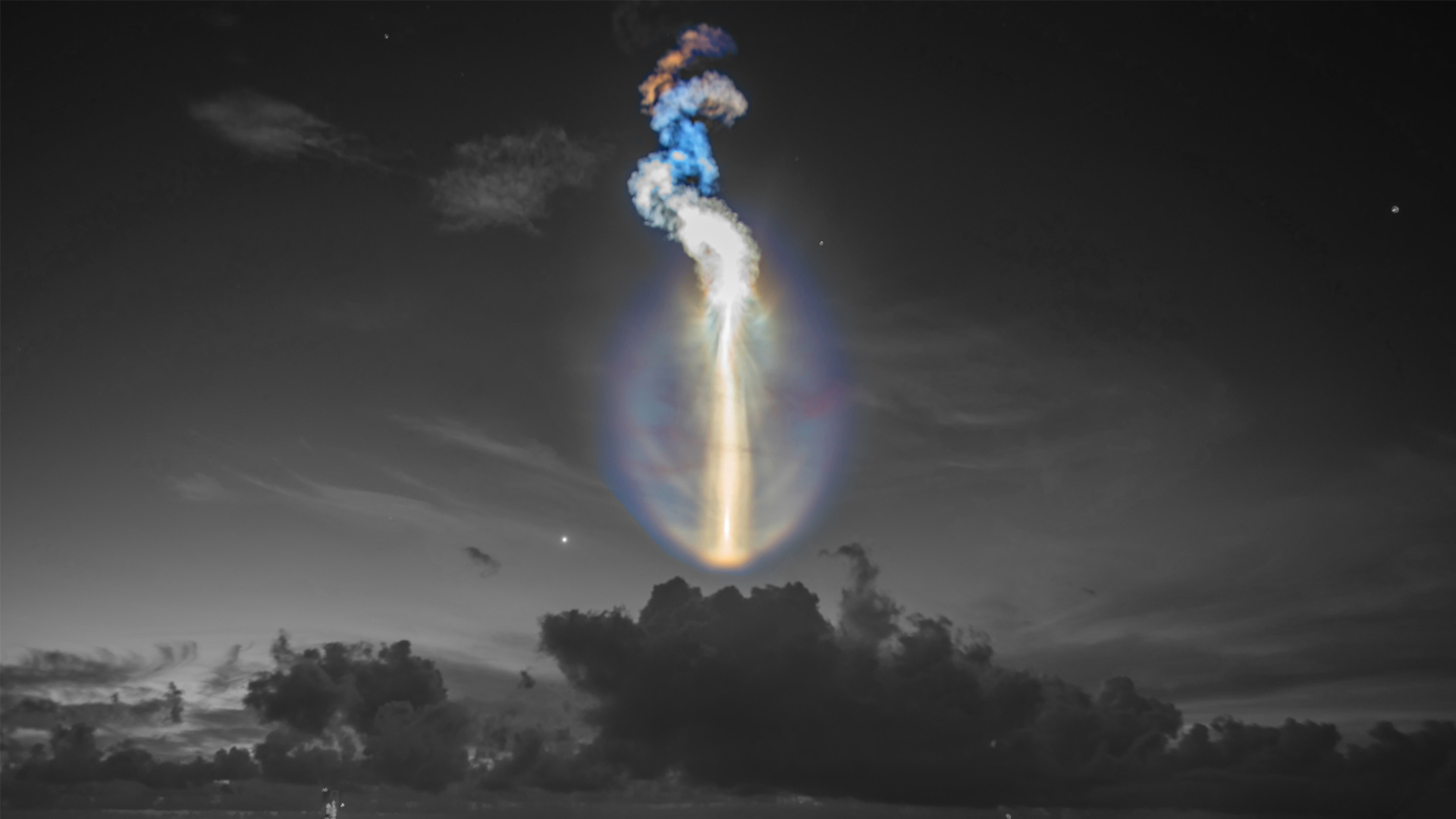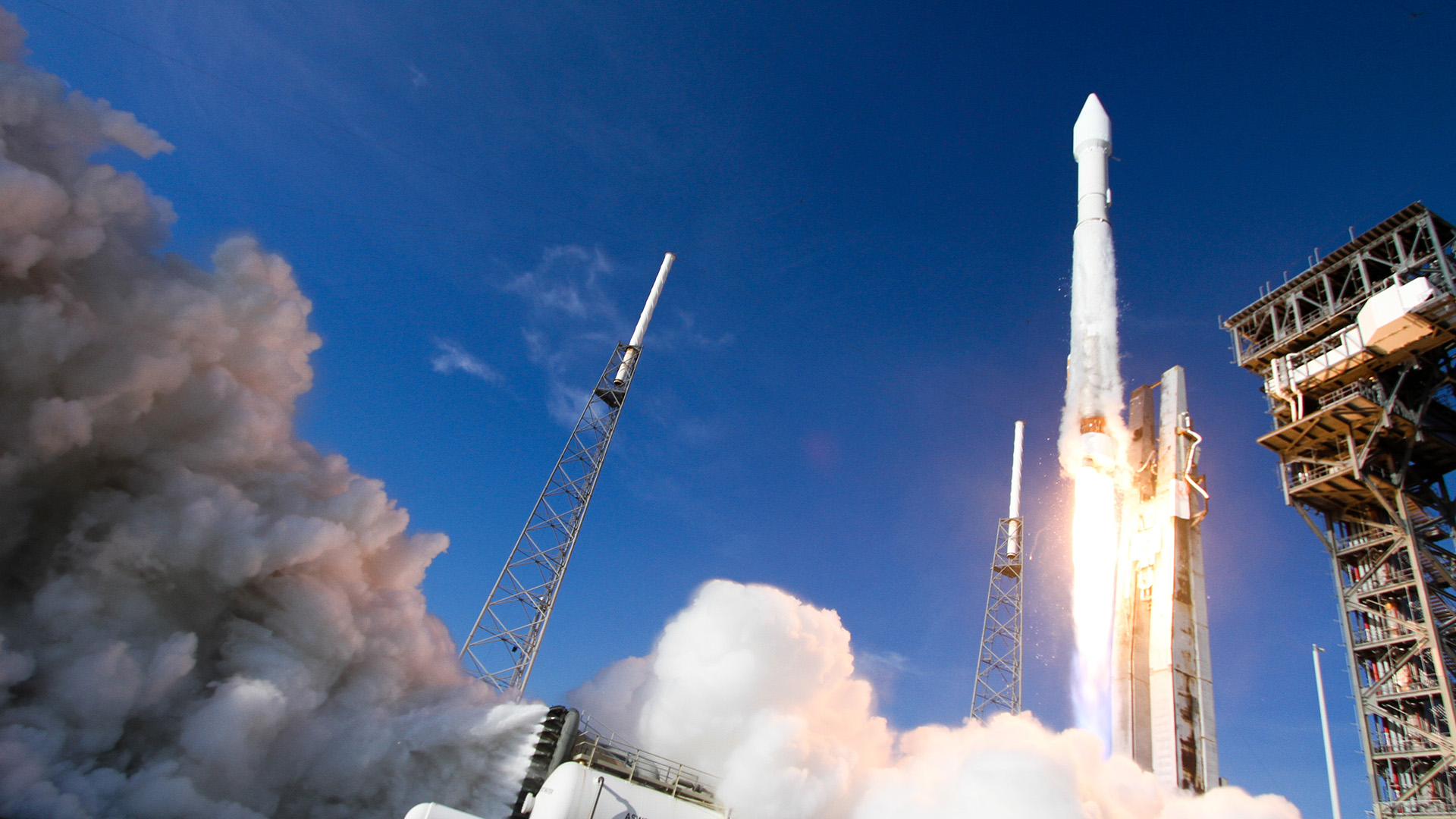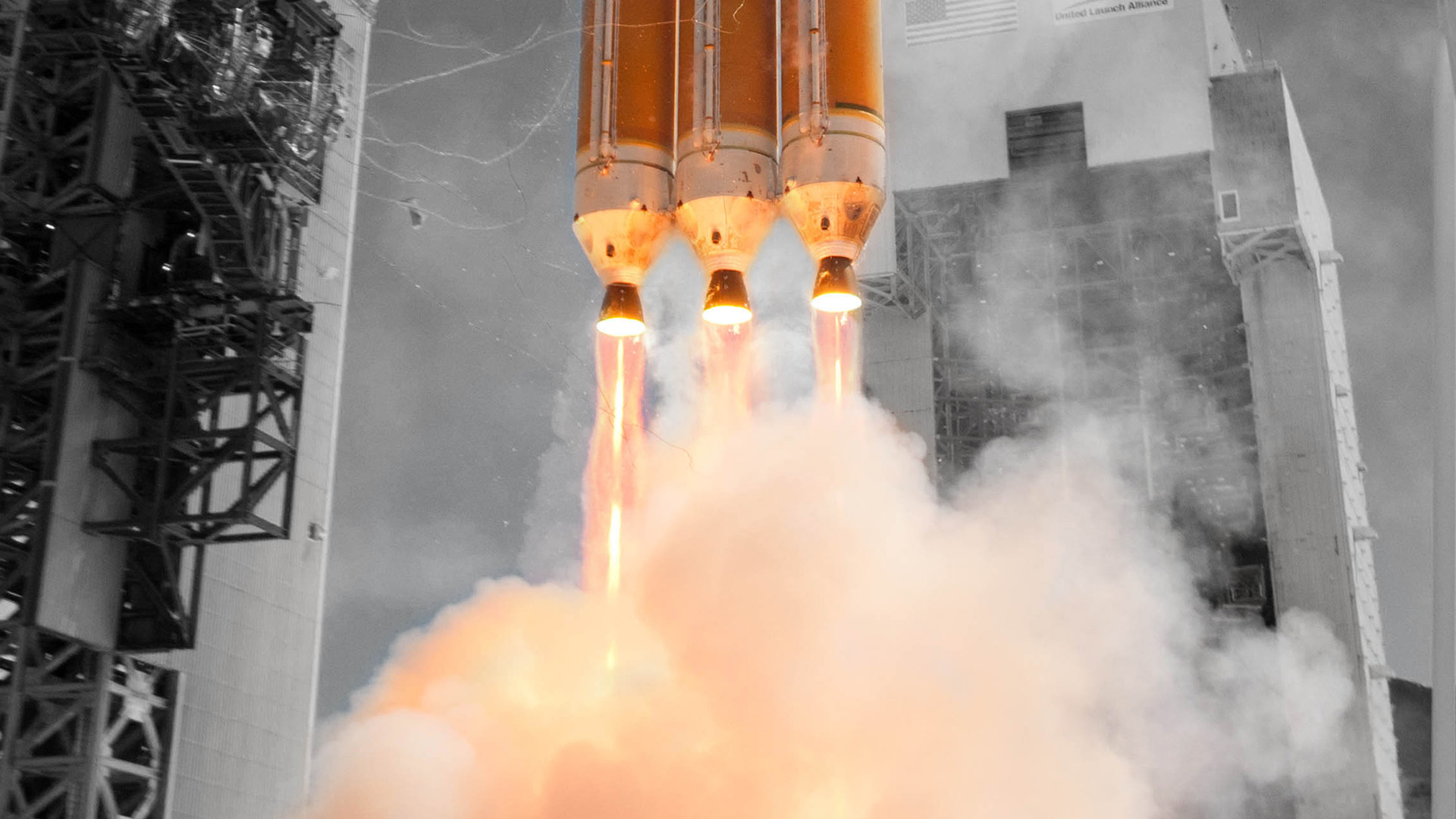Commercial Crew
Trusted.
Proven.
History.
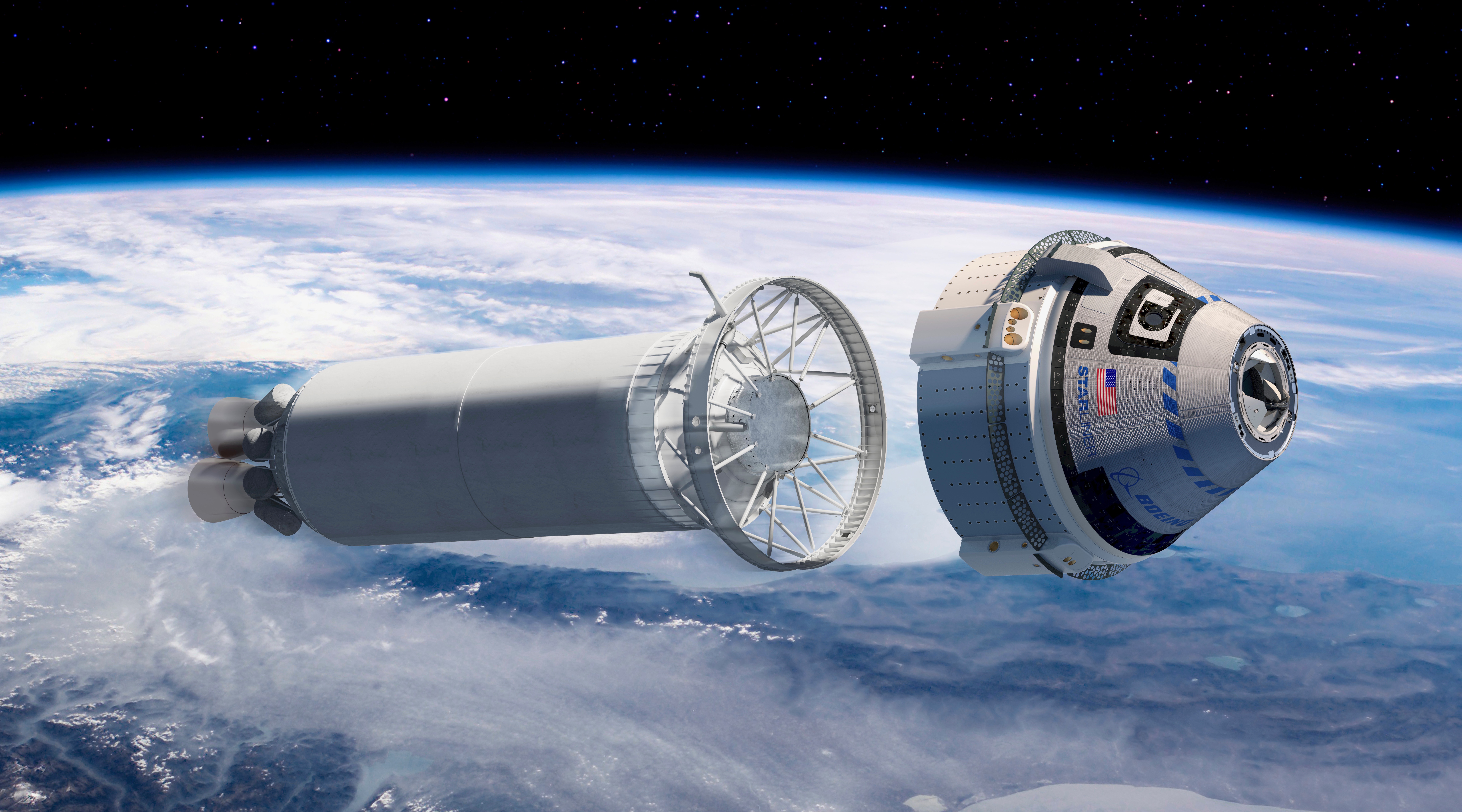
John Glenn became the first U.S. astronaut to orbit the Earth after being launched on a heritage Atlas LV-3B rocket from Cape Canaveral, Florida, in 1962. We are proud to continue this heritage as we prepare to launch the Atlas V Starliner.
A ULA Atlas V rocket will send astronauts to the International Space Station (ISS) aboard The Boeing Company’s CST-100 Starliner capsule. The Starliner will launch on the Atlas V from Space Launch Complex-41 at Cape Canaveral Space Force Station, on Florida’s Space Coast.
NASA Astronauts Sunita Williams and Barry “Butch” Wilmore, will launch aboard the Atlas V Starliner on the Crew Flight Test (CFT) mission. Astronauts Scott Tingle and Mike Fincke will serve as the CST-100 Starliner-1 spacecraft commander and pilot, respectively.
Safety is a critical part of the ULA decision-making process, and we fully understand the responsibility and honor of launching American astronauts. ULA has performed a tremendous amount of work in conjunction with Boeing and NASA to ensure our designs provide the highest level of safety to the crew.
Configuration
The Atlas V Starliner builds on ULA’s solid history of success and incorporates new technologies designed for crew safety.
Dual Engine Centaur: For CST-100 Starliner missions, the Centaur upper stage will fly with two RL10A-4-2 engines, offering more thrust to accommodate the Starliner. It also helps shape the ascent trajectory to the Space Station.
Launch Vehicle Adapter (LVA) and Aeroskirt: The launch vehicle adapter (LVA) provides the structural attachment of the Starliner capsule to the Atlas V rocket. The LVA uses a truss structure and metallic ring to attach the spacecraft to the Centaur upper stage. ULA also designed a 70-inch-long aeroskirt to extend the Starliner aerodynamic surface, which enhances the aerodynamic characteristics, stability, and loads of the Atlas V for the unique crewed configuration.
Emergency Detection System (EDS): This system monitors various launch vehicle parameters to determine the health of the rocket, and provides a capability to take action by signaling an abort command so the Starliner can escape if necessary.
Orbital Flight Test-2: Atlas V Starliner
A United Launch Alliance (ULA) Atlas V carrying Boeing’s CST-100 Starliner spacecraft on Orbital Flight Test-2 (OFT-2) to the International Space Station (ISS) as part of NASA’s Commercial Crew Program, lifted off on May 19 at 6:54 p.m. EDT, from Space Launch Complex-41 (SLC) at Cape Canaveral Space Force Station. This marks the 93rd successful launch of an Atlas V rocket, and the 104th launch from SLC-41.


